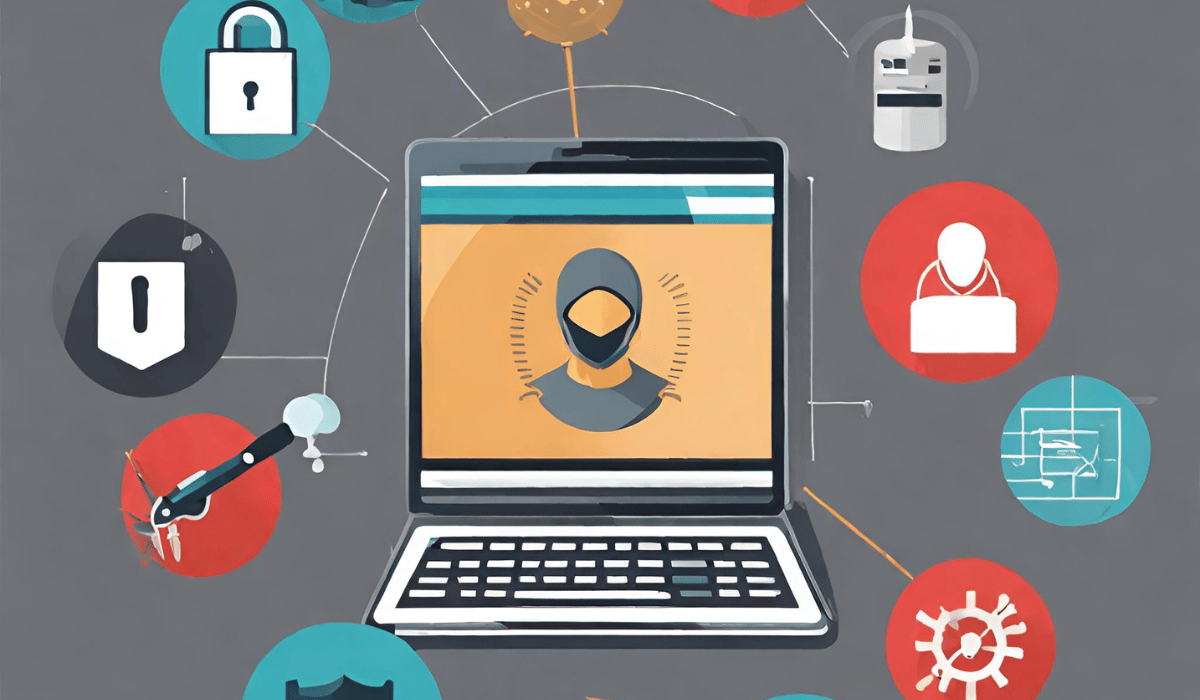No, encryption does not prevent hackers from deleting data. Encryption only secures data by converting it into a coded form, but it does not protect against data deletion. Hackers with access to the system and the appropriate permissions can still delete encrypted data.
Data protection is a paramount concern for individuals and businesses in today’s digital age. With the increasing prevalence of cyber threats, it has become imperative to safeguard sensitive information from unauthorized access. One such method that has gained significant popularity is encryption. But can encryption truly prevent hackers from deleting data? Let’s explore the world of encryption and its effectiveness in data protection.
Understanding the Basics of Encryption
Before we examine the role of encryption in data protection, it’s important to grasp the fundamentals of this technology. At its core, encryption is a process of encoding information in a way that is only accessible to authorized parties. By converting data into cipher text using complex algorithms, encryption ensures that even if hackers manage to intercept the information, they will not be able to decipher its contents without the proper encryption keys.
What is Encryption?
Encryption is not new; it has been used for centuries to protect sensitive information. In ancient times, people used encryption techniques, such as substitution and transposition ciphers. However, with the advent of computers and the digital age, encryption has become more sophisticated and complex.
Modern encryption algorithms are designed to withstand attacks from powerful computers and advanced hacking techniques. They employ mathematical operations that are computationally intensive, making it extremely difficult and time-consuming for unauthorized individuals to break the encryption and access the original data.
Different Types of Encryption
There are various types of encryption algorithms utilized in today’s digital landscape. Some commonly used encryption algorithms include the Advanced Encryption Standard (AES), Rivest Cipher (RC), and Data Encryption Standard (DES).
The Advanced Encryption Standard (AES) is one of the most secure encryption algorithms. It is used by governments, financial institutions, and organizations that require high levels of security for their data. AES uses a symmetric key encryption method, using the same key for both encryption and decryption.
The Rivest Cipher (RC) is a family of symmetric key encryption algorithms. It includes various versions such as RC2, RC4, and RC5. RC algorithms are known for their simplicity and speed, making them suitable for applications where efficiency is a priority.
The Data Encryption Standard (DES) is a widely used older encryption algorithm. However, due to advances in computing power, DES is no longer considered secure enough for modern applications. More advanced algorithms like AES have replaced it.
Each encryption algorithm offers different levels of security and complexity, allowing users to choose the most suitable encryption method for their specific needs. It’s important to carefully evaluate the strengths and weaknesses of each algorithm before implementing encryption in any system.
The Role of Encryption in Data Protection

The primary purpose of encryption is to protect data from unauthorized access. By encrypting sensitive information, individuals and organizations can mitigate the risk of data loss or theft. Encryption is a barrier that prevents hackers from easily accessing and manipulating data. Consequently, it plays a crucial role in maintaining data confidentiality, integrity, and availability.
Encryption is a complex process that involves converting plain text data into an unreadable format known as ciphertext. This ciphertext can only be deciphered and transformed into its original form through encryption keys. These keys are typically long character strings generated using advanced algorithms. The keys are kept secret and are only known to authorized individuals or systems.
How Does Encryption Protect Data?

Encryption safeguards data by ensuring only authorized individuals possess the keys to decrypt the information. Hackers cannot decipher the encrypted data without these keys, rendering it useless. Encryption also provides an additional layer of protection in cases where hackers gain unauthorized access to a system or network. Even if the data is stolen, it remains encrypted, significantly reducing the likelihood of sensitive information falling into the wrong hands.
When data is encrypted, it undergoes a mathematical transformation that makes it extremely difficult for unauthorized individuals to decipher. Encryption algorithms use complex mathematical calculations and cryptographic functions to scramble the data in a way that can only be reversed with the correct encryption key. This ensures that even if a hacker manages to intercept the encrypted data, they cannot make sense of it without the encryption key.
Different types of encryption algorithms can be used to protect data. Some popular ones include Advanced Encryption Standard (AES), Data Encryption Standard (DES), and Rivest-Shamir-Adleman (RSA). These algorithms vary in terms of their complexity, security, and speed. Organizations must carefully choose the encryption algorithm that best suits their needs, considering factors such as the sensitivity of the data and the desired level of protection.
Real-world Examples of Encryption Use
Encryption has been widely adopted across various industries to protect sensitive data. For instance, the healthcare sector utilizes encryption to secure patient records and medical information. This ensures that patient data remains confidential and protected from unauthorized access. In a data breach, the encrypted data would be useless to the attackers without the encryption keys.
Financial institutions rely heavily on encryption to safeguard customers’ banking details and transactional data. Encryption ensures that sensitive information such as credit card numbers, social security numbers, and account details are securely transmitted and stored. This helps prevent unauthorized individuals from accessing customers’ financial information, reducing the risk of identity theft and financial fraud.
Additionally, e-commerce platforms employ encryption to secure online transactions, protecting customers’ personal and financial information from potential hackers. When customers enter their payment details during an online purchase, the information is encrypted before transmission. This encryption ensures that the data remains confidential and cannot be intercepted or tampered with by malicious actors.
In conclusion, encryption is a vital component of data protection. It provides a robust defense against unauthorized access and ensures the confidentiality and integrity of sensitive information. By implementing encryption measures, individuals and organizations can enhance the security of their data and reduce the risk of data breaches and cyberattacks.
The Threat of Hackers
Common Methods Used by Hackers

Hackers employ many techniques to exploit systems vulnerabilities and gain unauthorized access. Some common methods include phishing attacks, malware injection, and exploiting software vulnerabilities. By staying informed about these attack vectors, individuals and organizations can take proactive measures to prevent data breaches and strengthen their overall security posture.
Phishing attacks can take various forms, such as email phishing, voice phishing (also known as vishing), or SMS phishing (smishing). It is crucial to be vigilant and cautious when interacting with any communication, especially when it involves sharing sensitive information.
Malware injection techniques continue to evolve, with hackers constantly devising new ways to deceive users and infect their devices. It is essential to have robust antivirus software and regularly scan devices for any signs of malware. Additionally, educating users about safe browsing practices and the importance of not downloading or opening suspicious files can help mitigate the risk of malware infections.
Software vulnerabilities are a significant concern for both individuals and organizations. Hackers often exploit known vulnerabilities that have not been patched or updated. Regularly updating software, using strong and unique passwords, and implementing multi-factor authentication can significantly reduce the risk of falling victim to hackers exploiting software vulnerabilities.
High-profile Cases of Data Deletion by Hackers
Over the years, numerous high-profile cases of data deletion by hackers have made headlines. These incidents are a stark reminder of the critical importance of ensuring robust data protection measures. From major corporations to government agencies, no entity is immune to the destructive power of hackers. Organizations can learn valuable lessons by analyzing past breaches and fortifying their defenses against potential data deletion attacks.
One notable case is the 2014 Sony Pictures hack, where hackers infiltrated the company’s network and deleted vast amounts of data. The attack resulted in significant financial losses, caused reputational damage, and disrupted business operations. The incident highlighted the need for comprehensive cybersecurity measures and the importance of regularly backing up data to prevent complete loss in the event of an attack.
Another notable case is the 2017 WannaCry ransomware attack, which affected hundreds of thousands of computers worldwide. The attack encrypted users’ files and demanded a ransom for their release. While not a case of data deletion, it demonstrated the devastating impact hackers can have on individuals and organizations. It underscored the need for robust backup systems, strong cybersecurity protocols, and timely software updates to prevent such attacks.
These high-profile cases serve as a wake-up call for organizations to prioritize cybersecurity and invest in comprehensive measures to protect their data. By learning from past incidents and implementing best practices, individuals and organizations can better safeguard their sensitive information from the ever-looming threat of hackers.
Can Encryption Prevent Data Deletion?
While encryption is a powerful tool in the battle against hackers, it is not a foolproof solution. Ultimately, the effectiveness of encryption in preventing data deletion depends on various factors.
The Effectiveness of Encryption Against Hacking
Encryption significantly reduces the likelihood of data deletion by making it more challenging for hackers to gain unauthorized access to sensitive information. However, it is crucial to implement encryption correctly and ensure that encryption keys are adequately safeguarded. If encryption keys fall into the wrong hands, hackers can decrypt the data and perform data deletion attacks.
Limitations of Encryption
While encryption offers a robust layer of protection, it is not a standalone solution. Encryption should be used with other security measures to provide comprehensive data protection. Regular security audits, strong access controls, and employee training are essential components of a holistic approach to data security.
Key Takeaways
- Encryption does not protect data from deletion but from unauthorized access and reading.
- Encrypted data can be deleted if a hacker gains access to the storage system.
- Protection from data deletion involves secure backups, strong access controls, and system security measures.
- Deleted encrypted data may potentially be recovered, but it’s not guaranteed.
- Secure backups are essential to restore data in case it is deleted.
FAQs
Does encryption protect data from deletion by hackers?
No, encryption does not protect data from being deleted. It’s designed to protect the contents of the data from being accessed without the correct key.
Can hackers delete encrypted data?
Yes, hackers can delete encrypted data if they gain unauthorized access to the system or storage where the data is kept.
How can I protect my data from being deleted by hackers?
Data can be protected from deletion through various methods, such as secure backups, strong access controls, intrusion detection systems, and regular system audits.
Can deleted encrypted data be recovered?
If the data is deleted, but the storage media is intact, it may be possible to recover it using data recovery tools. However, success is not guaranteed.
What happens if encrypted data is deleted?
If encrypted data is deleted, it can’t be accessed anymore. If a secure backup is available, it can be restored.
Conclusion
In conclusion, encryption is a vital component in protecting data against hackers. While it may not provide a guarantee against data deletion, encryption significantly raises the bar for potential attackers. By combining encryption with other security measures, regular audits, and employee training, individuals and organizations can create a robust defense against hackers and mitigate the risk of data deletion.
